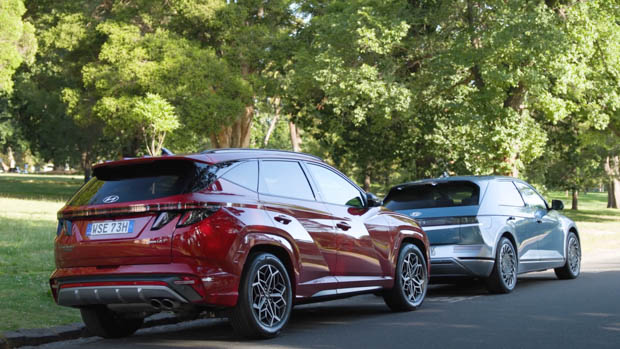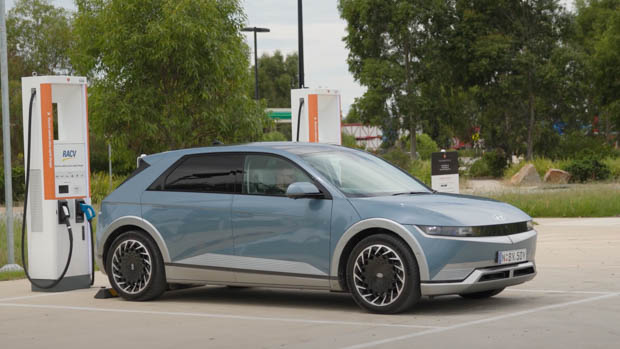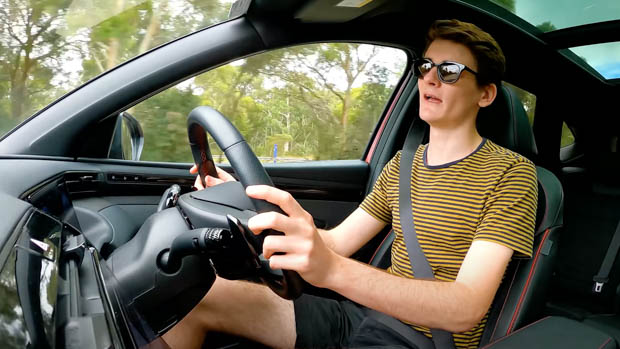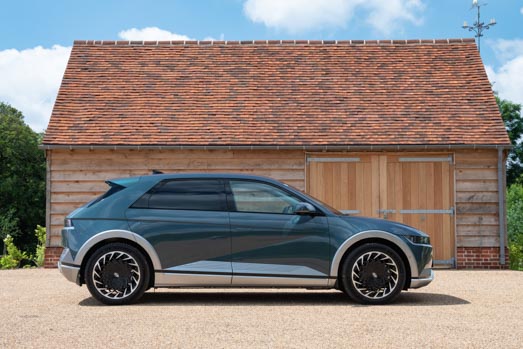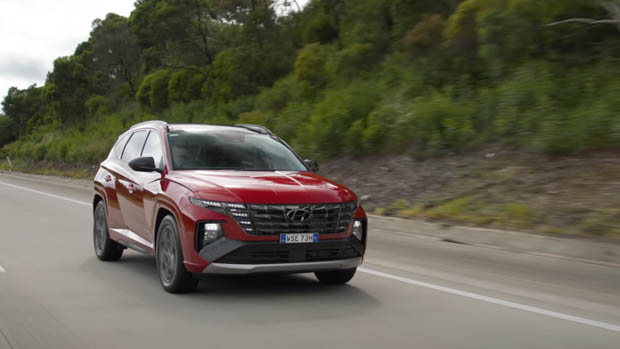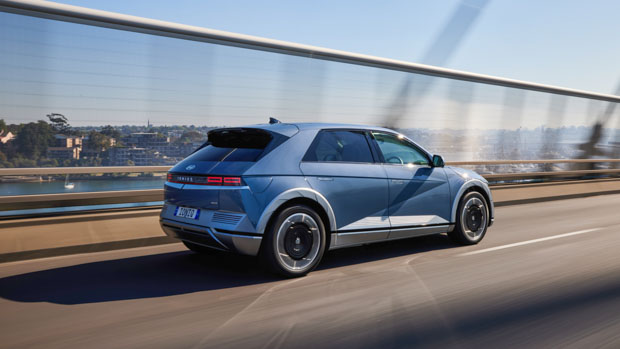-
Car Reviews
- Car News
-
Car Comparisons
Latest comparisons
- Chasing Deals
Electric cars are here to stay, and they’re getting better and cheaper all the time – but how do they cope with long distance driving?
Electric car sales reached a record 1.95 percent of all new vehicles sold in Australia last year – which was more than double the year before.
But doubts remain in many Australian buyers around whether an electric car is truly a practical family vehicle solution – and often the sticking point is long-distance road-trip ability.
To put this to the test, Chasing Cars pitted two midsize SUVs head to head – one an EV and the other a familiar petrol-powered SUV– to find just how much slower it is to go electric across our great southern land.
Our first test of this kind looks at the 900km drive between Sydney, NSW and Melbourne, VIC – admittedly, not as taxing as an outback or far-western drive but it’s a good place to start given how many families drive between Australia’s two biggest cities.
The two contenders we picked for this challenge were the all-new Hyundai Ioniq 5 and its well-known petrol-powered sibling: Hyundai’s Tucson midsize SUV.
Armed with a 1.6-litre turbo-petrol four-cylinder engine, a seven-speed dual-clutch automatic and all-wheel drive, the Tucson has an approximate driving range of 750km when you divide its 7.2L/100km average fuel consumption into its 54-litre fuel tank.
The Ioniq 5 seen here is in the current top-spec configuration with a 70.0kWh of usable battery capacity (72.6kWh gross) sending power to all four wheels via a 225kW/605Nm dual-motor setup.
In this specification, the Ioniq 5, has a range figure of 430km when tested according to often accurate WLTP standards with average consumption rated by Hyundai at 19kWh/100km.
While other EVs have longer range figures it’s the Ioniq 5’s class-leading 350kW charging speed makes all the difference on a road trip like this, providing the ability to top up the battery from 10-80 percent in 17 minutes and 16 seconds and a five-minute blast on the charger can add up to 100km.
Every year more Australians travel between Sydney and Melbourne than any other route and that’s exactly why we’ve chosen it for this challenge.
Peppered with a growing network of ultra-rapid DC chargers capable of matching the Ioniq 5’s 350kW charging speed, the route offers a fair comparison to its petrol-powered sibling which benefits from a wealth of existing infrastructure.
With editor Tom Baker in the Ioniq 5 and journalist John Law in the Tucson, the team set off from our offices in central Sydney on a 879km journey towards the Tan Track in Melbourne’s CBD.
Unsurprisingly, the longer-range petrol SUV won the day – but not by as much as you might have expected.
With one refuelling stop and a couple of brief bathroom breaks, the Tucson completed the drive from Sydney to Melbourne’s Tan Track in a swift 9 hours, 8 minutes and 53 seconds – an average speed of about 98km/h including breaks.
However, the all-electric Ioniq 5 wasn’t far behind with a time of 9:47:33 placing it just 38 minutes and 40 seconds off the pace on what was a very lengthy journey. The electric Hyundai took four fast-charging stops, averaging 91km/h including charging breaks.
In order to get the quickest overall time possible, the team focused on charging the Ioniq 5 frequently and in short bursts to recoup as much energy as possible in the shortest amount of time.
Editor Tom Baker, driving the Ioniq 5, stopped a total of four times in the Ioniq 5 and deliberately running the 70kWh battery down to about 20 percent capacity each time in order to reach the optimal charging speeds.
While the team never saw the headline 350kW maximum charging speeds, the Ioniq 5 did peak at an impressive 220kW and importantly never fell below 180kW.
The biggest setback came in Gundagai where the team found a Tesla Model 3 parked in the sole operating 350kW charger, forcing them to hop on the considerably slower 50kW charger until the space was freed up.
Across the same trip, the Tucson stopped once to refuel with petrol, and twice for short bathroom breaks.
The Tucson used an average of 6.9L/100km across the trip, just shy of its ADR81/02 government combined fuel consumption figure of 7.2L/100km.
The Ioniq 5’s energy consumption was 20.0kWh/100km – 5 percent worse than the 19.0kWh/100km WLTP claim, implying a range of 350km per charge for the AWD dual-motor Ioniq 5.
While the Ioniq 5 may not have taken first place in this race, it was a clear winner when it came to the cost required to complete the circa 900km trip.
When factoring in the cost of charging the battery beforehand and using the Chargefox ultra-rapid chargers along the way, the Ioniq 5 required just $67 to travel to Melbourne.
Similarly, the Tucson began the day with a full tank of fuel and was topped up with E10 across the journey with the cost coming in $112 across the same distance.
While the Ioniq 5 took 38 minutes more from Sydney to Melbourne when compared to a petrol-powered Tucson – 7 percent more time, in other words – most drivers would not be racing between the two cities.
The Ioniq 5 was so close behind the Tucson that it was effectively lineball for most drivers.
But that’s not the case for all Australian road trips. Gold standard ultra-rapid chargers are now found every 200km or so on Australia’s east coast – and between Melbourne and Adelaide – but many outback and other remote drives are still tough with an electric car.
Chasing Cars continues to monitor the rollout of electric car chargers in Australia and we’ll complete many more EV road trips in future years, so don’t forget to subscribe to our channel and newsletter now!
Latest news
About Chasing cars
Chasing Cars reviews are 100% independent.
Because we are powered by Budget Direct Insurance, we don’t receive advertising or sales revenue from car manufacturers.
We’re truly independent – giving you Australia’s best car reviews.
